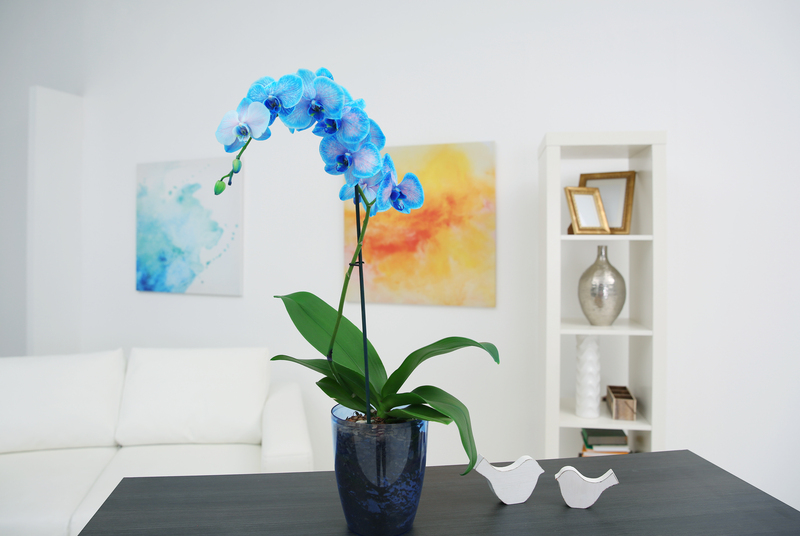Beyond Gloom: Evergreen Climbers for Dim Areas
Posted on 15/05/2025

Beyond Gloom: Evergreen Climbers for Dim Areas
In the world of gardening, even the shadiest nooks and crannies of a plot deserve their own patch of verdant beauty. When faced with dim areas, many gardeners shy away from planting, assuming that nothing vibrant can grow in such conditions. Contrary to this belief, there are a variety of evergreen climbers that not only survive but thrive in the shade, bringing life and color to the most overlooked parts of a garden. In this article, we explore some of the best evergreen climbing plants that can transform any gloomy space into a lush, evergreen haven.
Understanding the Needs of Dim Areas
Before delving into the suitable plant species, it's crucial to understand the specific requirements of dim or shaded areas. Shaded areas can vary greatly, from spots with absolutely no direct sunlight to those receiving indirect light for a few hours a day. These areas might be underneath large trees, next to walls that block the sun, or nestled between high garden borders.
The key to successful planting in shaded areas is to select plants that are adapted to low light conditions. These plants often have broader leaves to capture more light and tend to be more resilient to the threats of pests and diseases due to lower temperatures and humidity levels prevalent in such spots.
Popular Evergreen Climbers for Low-Light Areas
1. Hedera helix (English Ivy)
English Ivy is a classic choice for shaded gardens. This robust evergreen climber is prized for its adaptability and ability to climb any surface with ease. It features dark green leaves and can create a remarkable green blanket over walls and fences, adding texture and depth to dim spaces.
2. Euonymus fortunei (Winter Creeper)
Euonymus fortunei is a versatile climber that can adapt well to low-light conditions. It is known for its vibrant foliage that remains colorful throughout the year. Varieties like 'Emerald Gaiety' and 'Silver Queen' offer bright variegated leaves, which help lift the look of shady spots.
3. Trachelospermum jasminoides (Star Jasmine)
With its glossy leaves and intoxicatingly fragrant flowers, Star Jasmine is an excellent addition to any shaded garden. Though it flowers more profusely in sunnier conditions, it still performs admirably as an evergreen climber in darker corners, offering a unique charm and subtle scent.
4. Aucuba japonica (Japanese Laurel)
Known for its substantial, decorative leaves, the Japanese Laurel does not climb in the traditional sense but can still be trained against a wall or trellis. It thrives in full to partial shade, displaying strikingly variegated leaves that provide year-round visual interest.
Advantages of Planting Evergreen Climbers in Shaded Areas
- Foliage Consistency: Evergreen climbers maintain their foliage year-round, ensuring a consistent level of coverage and color, even during the bleakest winter months.
- Low Maintenance: Many evergreen climbers require minimal upkeep once established. They are particularly suited to low-light conditions where their growth slows, reducing the need for constant pruning.
- Environmental Benefits: These plants are not only pleasing to the eye but also play a critical role in improving the local environment, offering habitats for wildlife and improving air quality by filtering pollutants.
- Space Utilization: Climbing plants make efficient use of vertical space, allowing gardeners with limited plot sizes to expand their gardening ambitiously upwards.
Cultivation Tips for Success
Soil Preparation
Ensure that the soil in your dim area is well-prepared. Despite their rugged appearance and resilience, many evergreen climbers appreciate a nutrient-rich and well-draining soil. Incorporating organic matter like compost can enhance the soil structure and fertility, providing an ideal environment for these plants.
Watering Practices
Shaded areas may retain moisture for longer periods, reducing the frequency of watering needed for these plants. However, it's crucial to ensure that your climbers do not sit in waterlogged conditions, as this can lead to root rot.
Pruning and Training
Regular pruning can help in managing the growth and appearance of your climbers, controlling their spread and encouraging denser foliage. Strategic pruning allows more light into densely shaded areas, fostering improved growth conditions.
Conclusion
Gardening in shaded areas doesn't have to be a daunting task. With the right evergreen climbing plants, you can transform the gloomiest spots of your landscape into thriving green havens. These resilient climbers not only bask in low light but also contribute greatly to the biodiversity and aesthetic of your garden. By choosing the suitable varieties and implementing careful cultivation practices, your dim areas can become a testament to nature's adaptability and the gardener's ingenuity.
Remember, the key to garden success in shaded areas lies not in avoiding planting but embracing the unique conditions and selecting plants that are innately suited to them. Let your imagination climb to the heights of creativity as you showcase the enduring charm and tenacity of evergreen climbers in dim areas.




